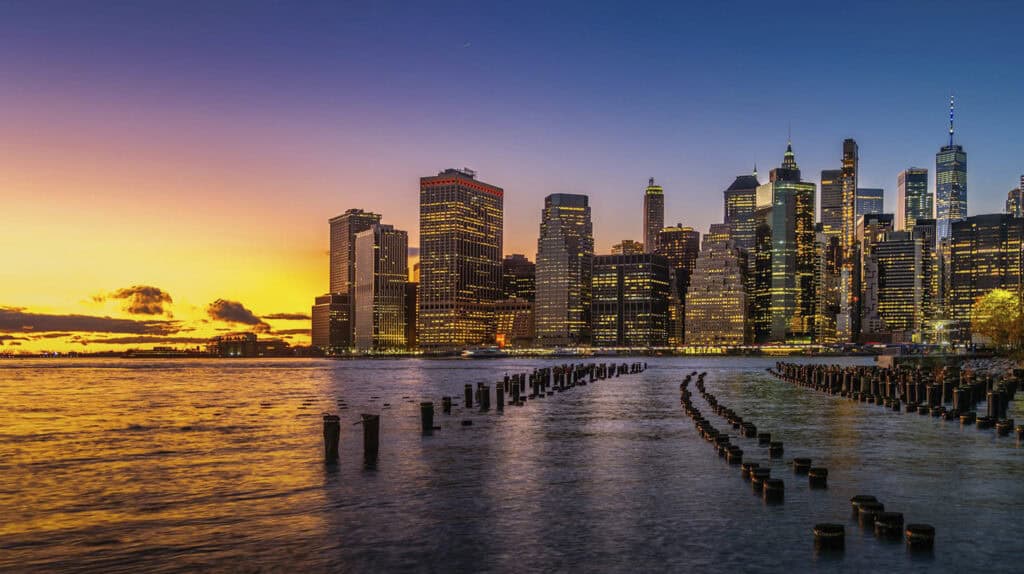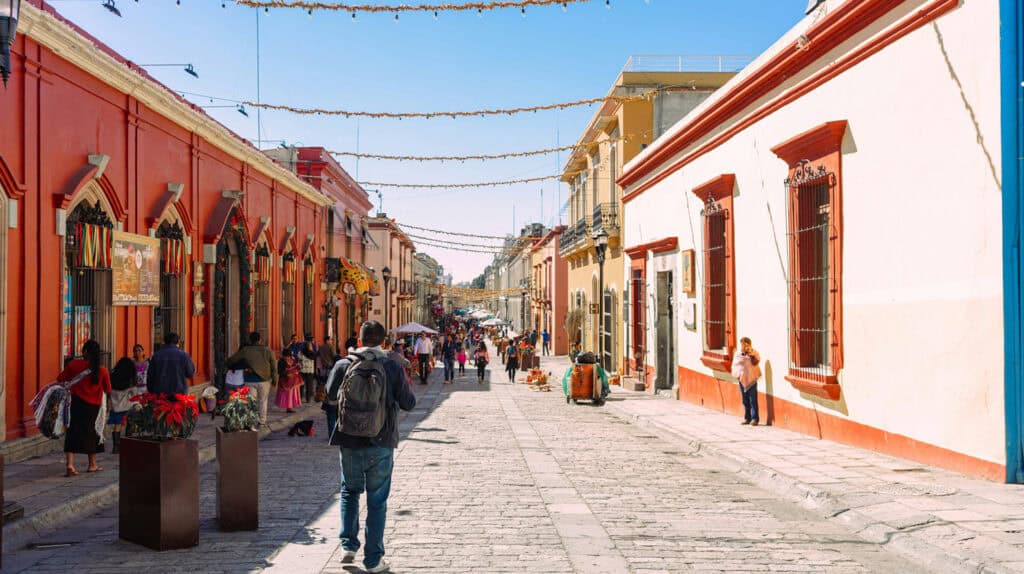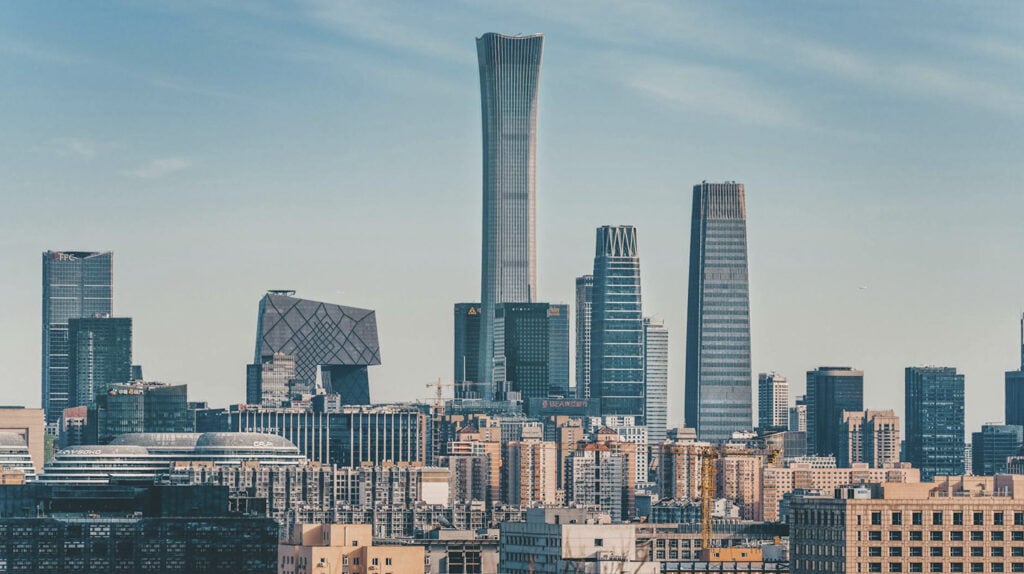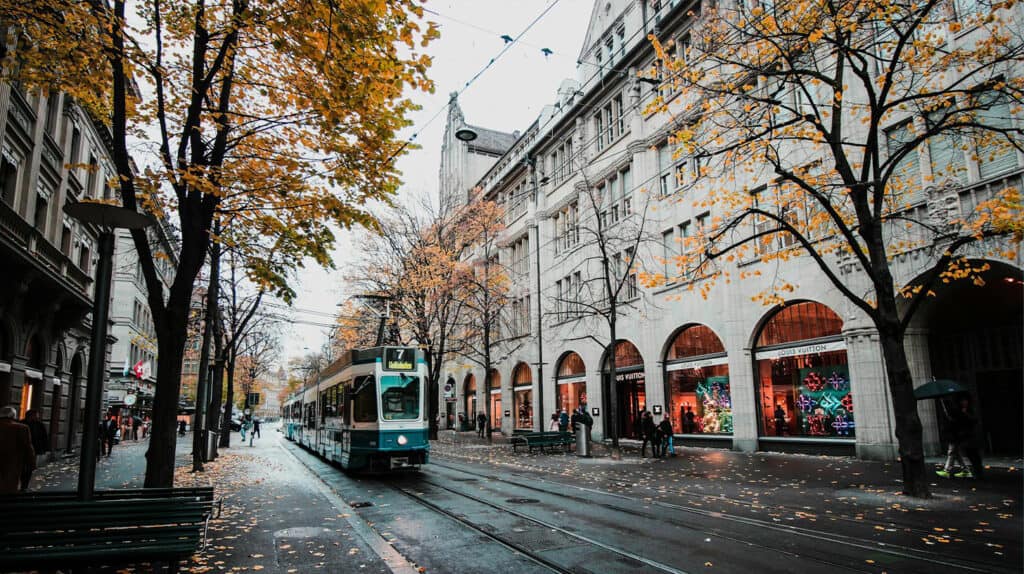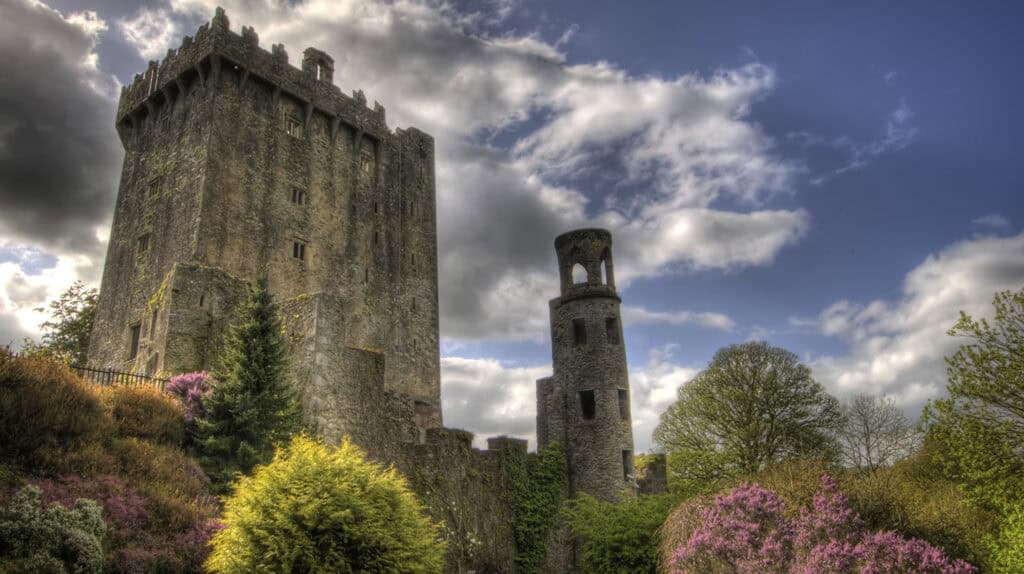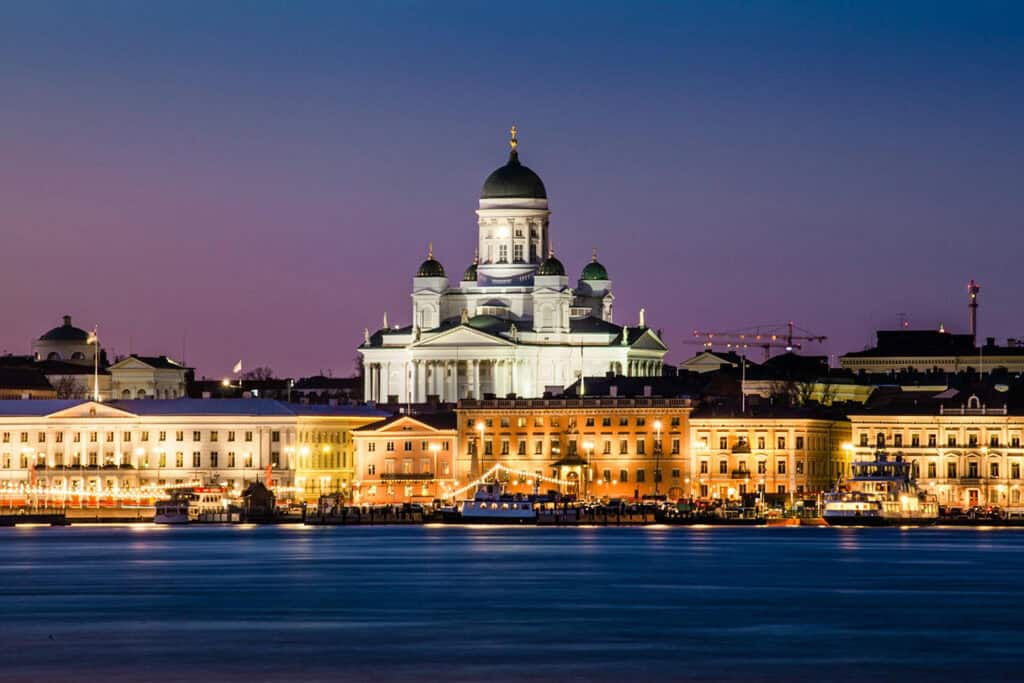
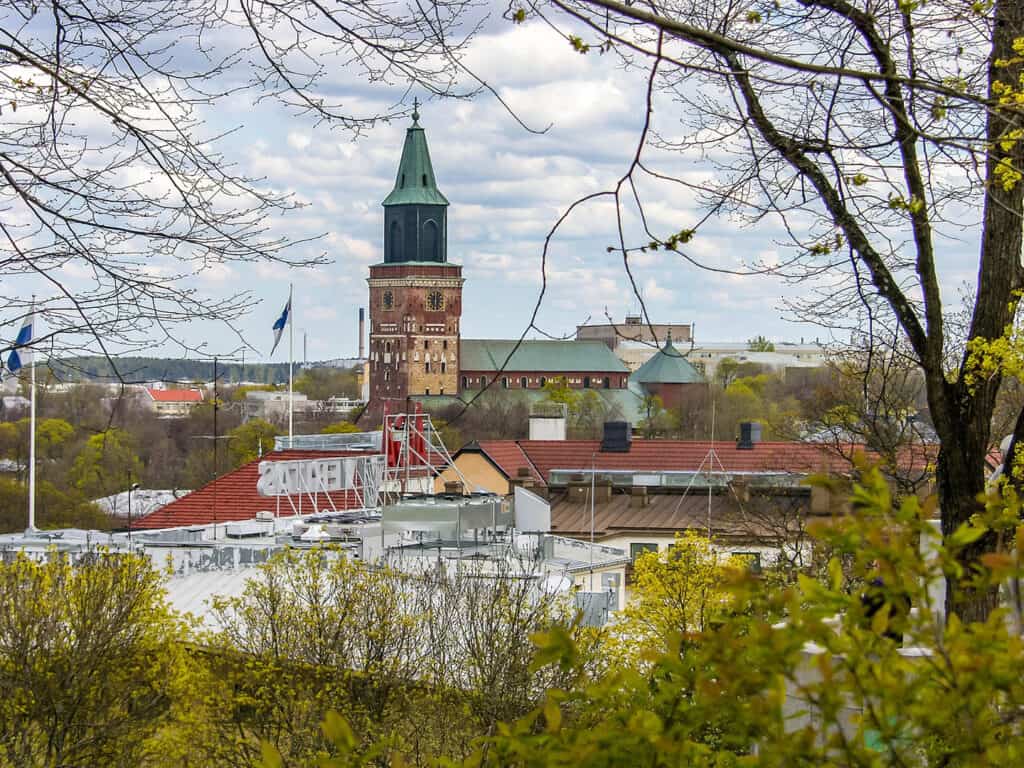

Curious about exploring Finland’s culture through its architecture? Finland has many important landmarks that reflect its rich history and culture. These famous sites are a unique part of Finnish heritage and are popular tourist attractions.
Finland’s landmarks showcase both historical and modern architecture, making them key pieces of the country’s identity.
At Landmarks Architects, we’ll take you on a journey through Finland’s must-see sites, from historic spots like Helsinki Cathedral and Suomenlinna to modern wonders like the Temppeliaukio Rock Church and Finlandia Hall.
In this article, we’ll cover:
- Historic landmarks that reveal Finland’s past
- Modern buildings that show Finland’s creativity and design
- Key cultural sites that give insight into Finnish heritage
Ready to explore Finland’s architectural gems? Let’s dive into Finland’s landmarks that make the country a beautiful mix of history and modern design.
3 Famous Landmarks

1. Helsinki Cathedral
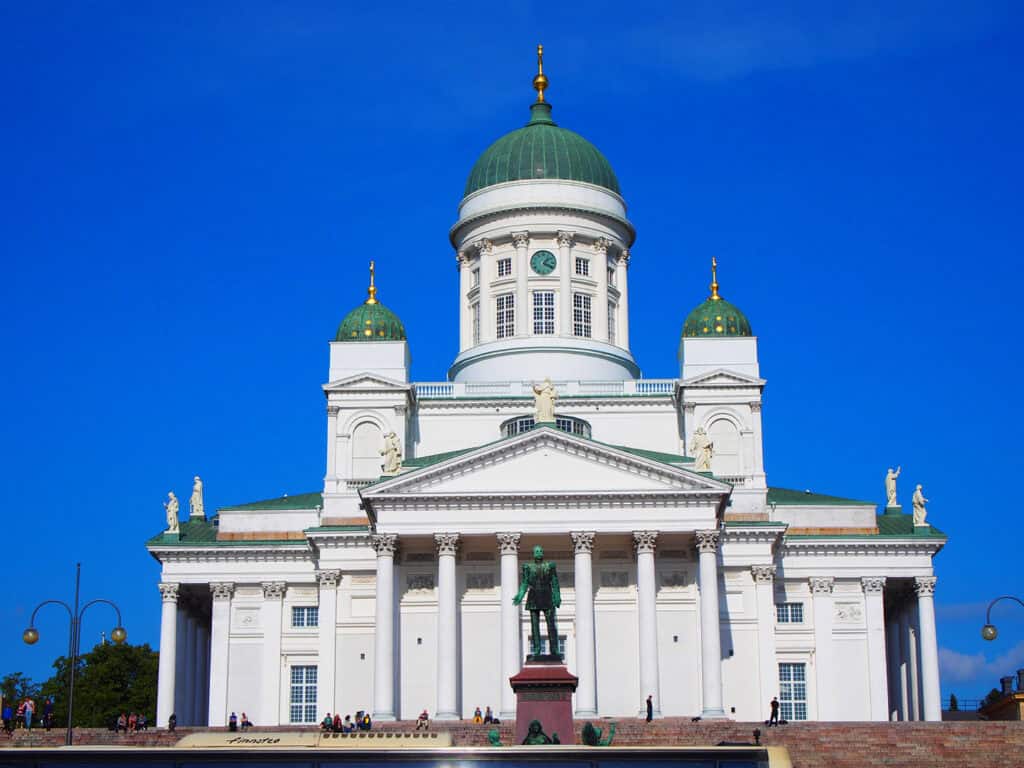
Helsinki Cathedral is a well-known symbol of Helsinki, the capital of Finland. It is located in Helsinki’s Senate Square. Its tall green dome is easy to spot.
This beautiful neoclassical building was designed by architect Carl Ludvig Engel and finished in the mid-19th century. Visitors come to see it’s impressive outside and lovely inside, which has striking altarpiece paintings.
The cathedral is important for religious services and public events, making it a key part of Finnish culture. Its steps offer a great view of the square and the lively atmosphere of the city. This landmark represents Finland’s architectural pride and is a vital place of worship.
See Also Ancient Viking Architecture: 4 Key Elements & Their Significance
2. Uspenski Cathedral
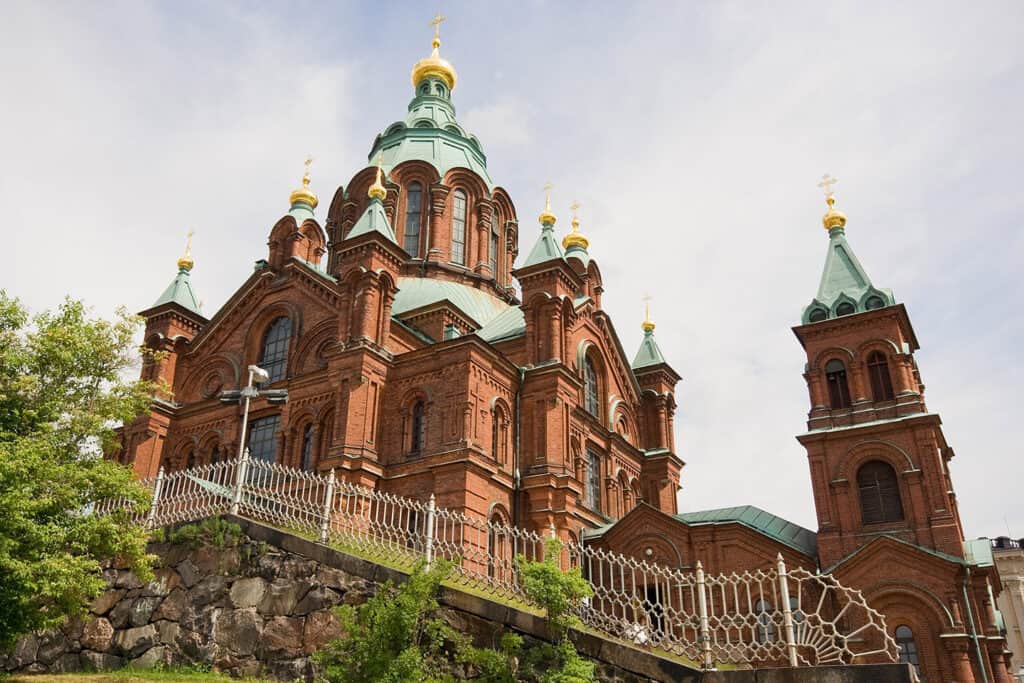
Uspenski Cathedral is the largest Greek Orthodox church in Western Europe and an important architectural landmark in Finland.
Built in the 19th century, its red-brick exterior and 13 golden domes make it very eye-catching. The cathedral draws visitors with its calm atmosphere and beautiful interior, filled with icons and frescoes.
Uspenski was mainly built for the Russian community during Finland’s time under Russian rule, showcasing Finland’s varied cultural history. The cathedral’s hilltop location gives stunning views of the harbor and city, attracting many tourists interested in both Russian and Finnish heritage.
3. Suomenlinna Sea Fortress
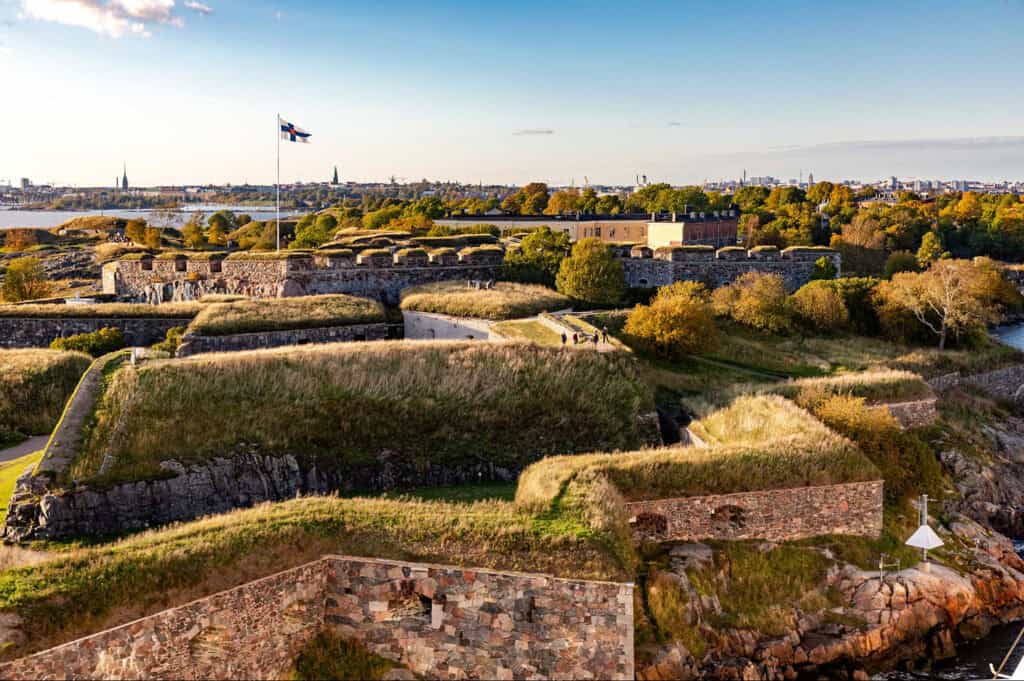
Suomenlinna is on a group of islands near Helsinki. It is one of the world’s largest sea fortresses. Built in the 18th century, it was an important military site during Swedish rule and later under the Russian army.
The fortress has a fascinating history and is a UNESCO World Heritage Site for its cultural importance. Exploring Suomenlinna gives visitors insights into Finnish history and military architecture.
The site has well-kept buildings, museums, and beautiful landscapes. Tourists can enjoy guided tours or relaxed walks along the ramparts while learning about its historical importance. This landmark combines nature and history, making it a must-see for anyone visiting Finland.
Historical Landmarks
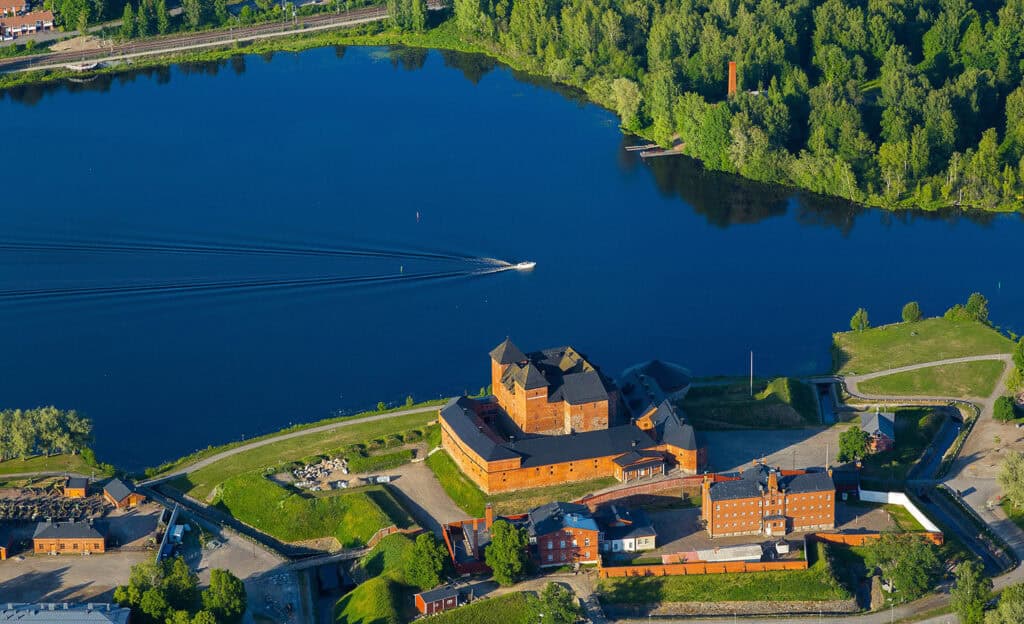
Finland is home to many historical landmarks that show its rich past. These sites are important for their architecture and the stories they tell about Finnish history and culture.
They also reflect various types of architectural styles that have evolved over the centuries. Here are some notable historical landmarks in Finland worth exploring.
See Also Traditional Swiss Architecture: 5 Key Styles & Modern Influences
4. Turku Castle
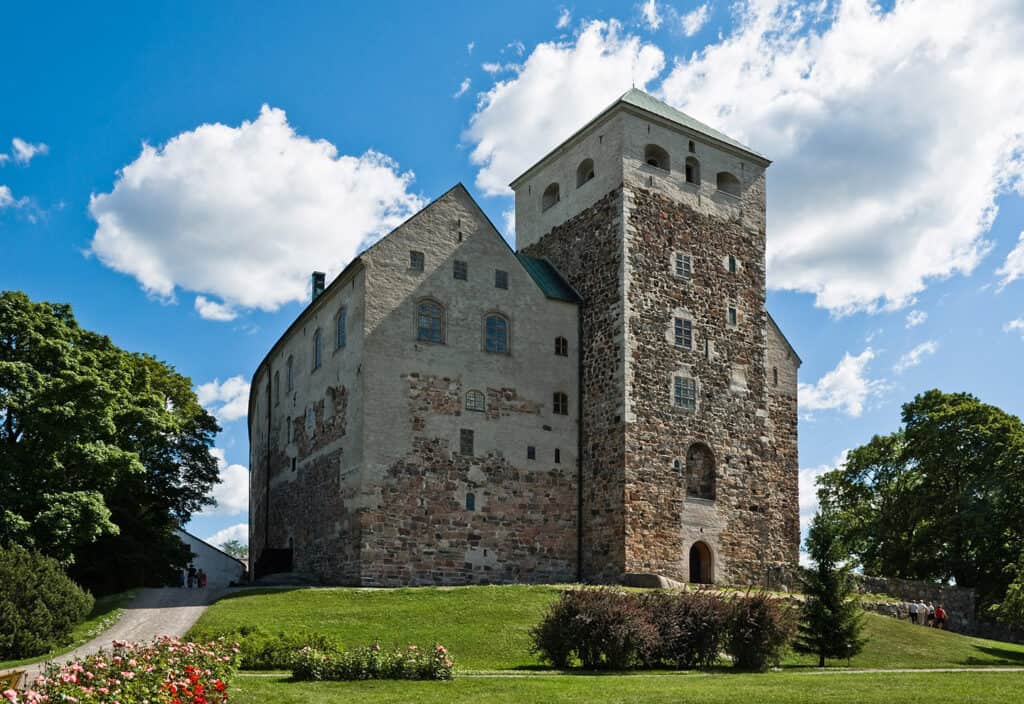
Turku Castle is a grand building dating back to the 13th century. It served as a royal residence and an important fortress during Swedish rule. The castle showcases Finland’s medieval architecture and houses the Turku Historical Museum.
The rooms contain artifacts that tell its long history, including the castle’s history during World War II. Visitors can explore the castle grounds and learn about its role in Finnish history.
5. Turku Cathedral
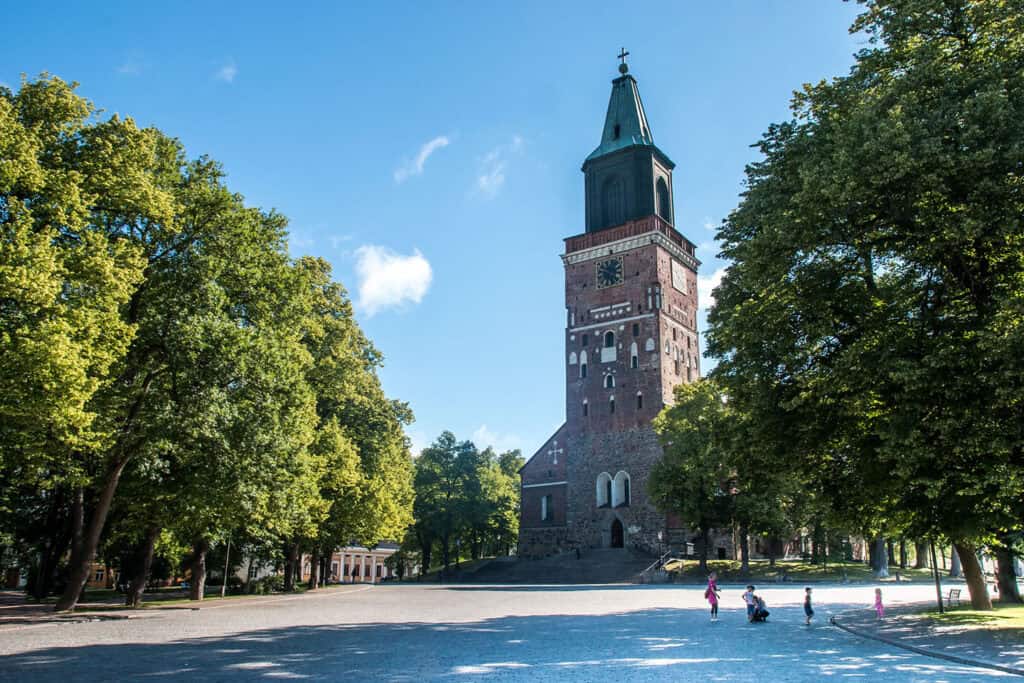
Turku Cathedral is Finland’s oldest and most important church, completed in 1300. It shows a mix of Romanesque and Gothic architectural styles. The tall green dome offers an impressive view of the city.
As the seat of the Archbishop, it holds great religious and cultural importance. The inside features beautiful altarpieces and chapels that reflect Finland’s medieval faith traditions. It is often called a medieval cathedral because of its historical importance.
6. Olavinlinna Castle
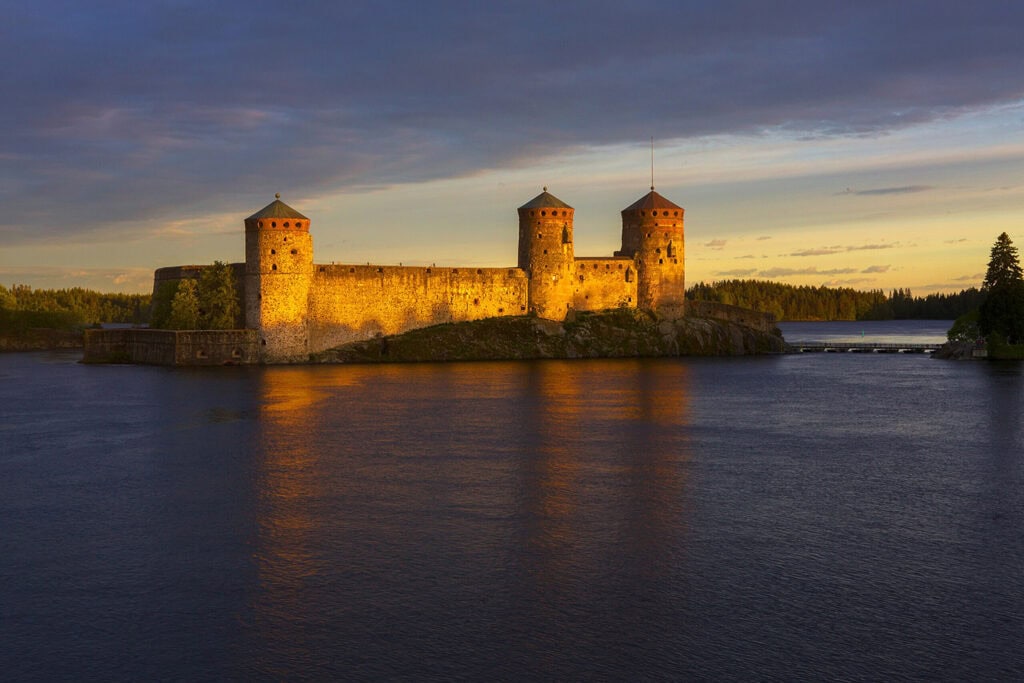
Olavinlinna Castle, located in Eastern Finland, was built in 1475. This beautiful fortress was crucial in defending against Russian invasions. Visitors can take guided tours to learn about its history, architecture, and the famous Savonlinna Opera Festival held nearby.
Its scenic location on three islands makes it a popular tourist attraction, offering beautiful views of the lakes. The castle is part of Finland’s Landmarks, showcasing the country’s historical significance.
7. Häme Castle
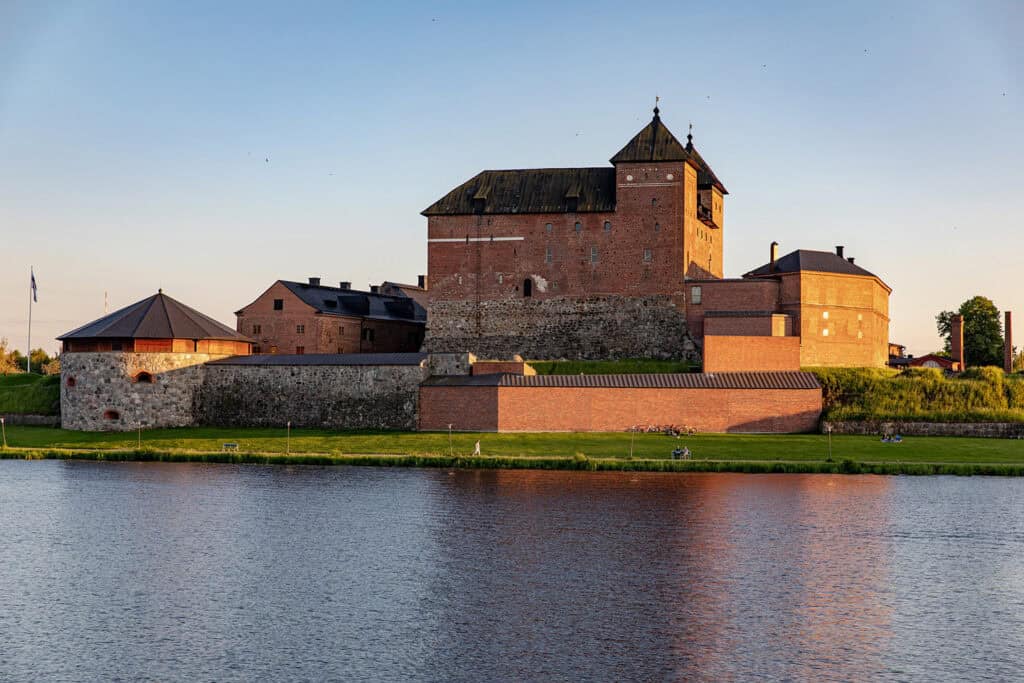
Häme Castle was built in the late 13th century. It shows Finnish history and medieval architecture. Built to protect the area, it has strong walls and a unique layout. The castle now serves as a museum that honors Finland’s heritage.
Guided tours reveal its history, including insights into Finnish royalty and military strategies during the Middle Ages. Visitors can explore the open-air museum nearby, which showcases traditional Finnish life and culture.
See Also Famous Architecture in Switzerland: 9 Must-See Architectural Masterpieces
8. Bomarsund Fortress
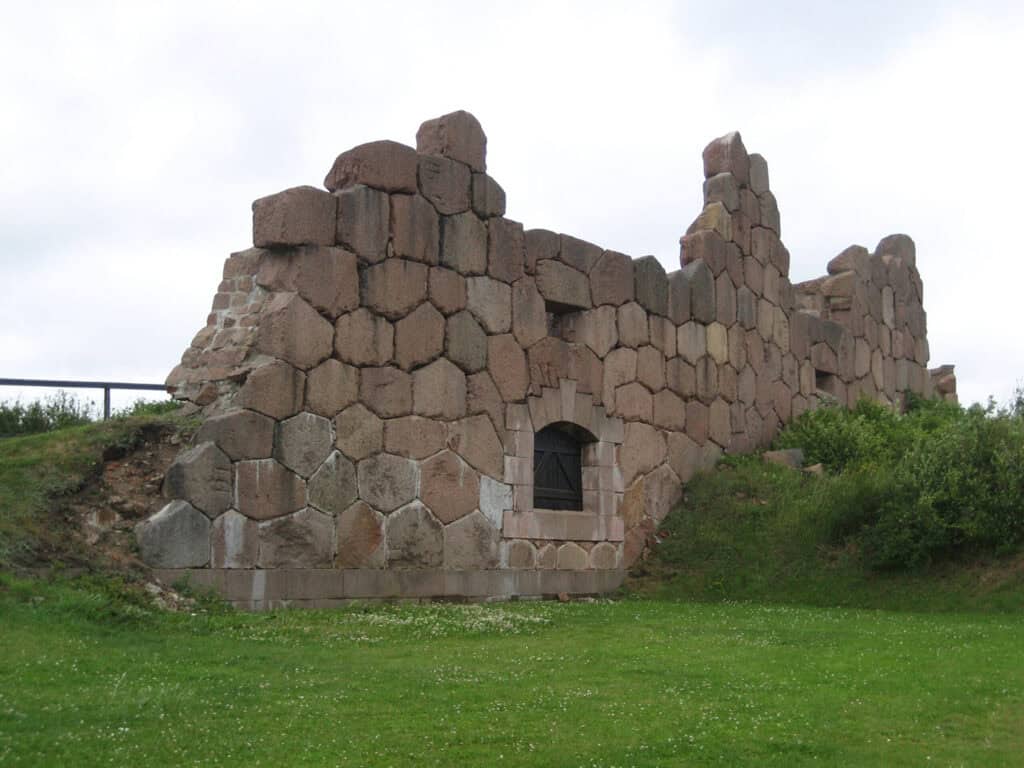
Bomarsund Fortress is an important structure built in the 19th century. Located in the Åland Islands, it was built by the Russians to protect against invasions. Today, only ruins remain, but this landmark tells a story of the Crimean War.
Visitors can explore the remains and enjoy the beautiful nature around this historical site. The fortress marks an important part of Finland’s military history.
Modern Landmarks
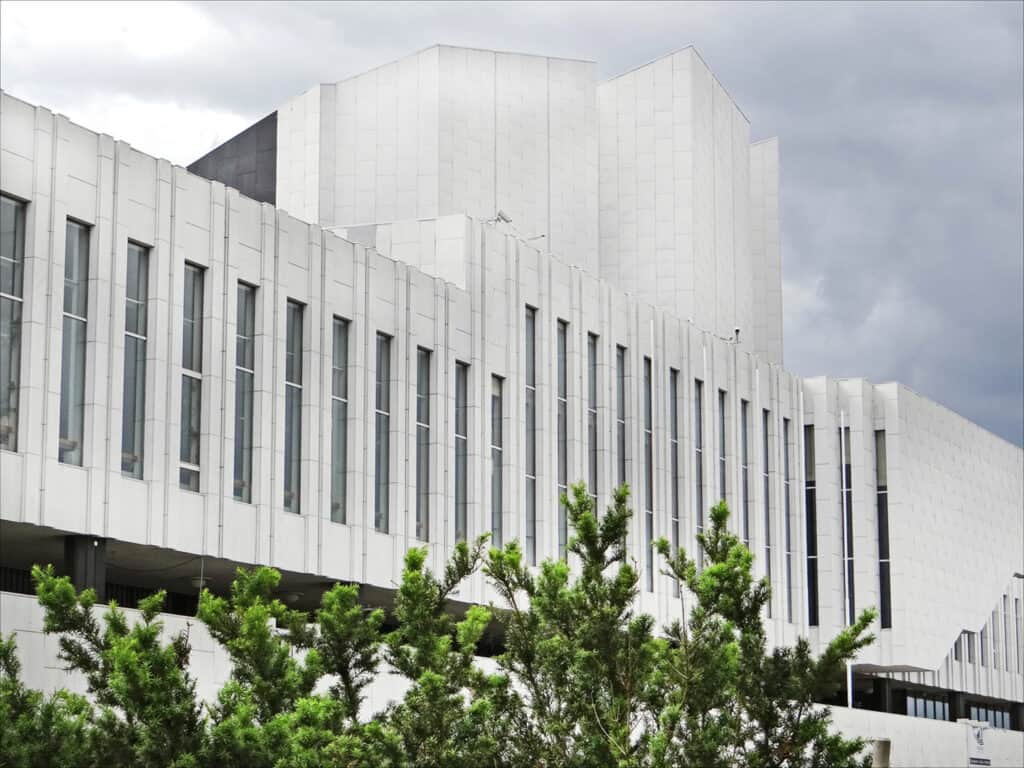
Finland has a mix of historic and modern architecture, showcasing its cultural and artistic achievements. Notable modern landmarks in Finland represent the country’s innovative spirit and provide important cultural venues for residents and tourists.
9. Temppeliaukio Church
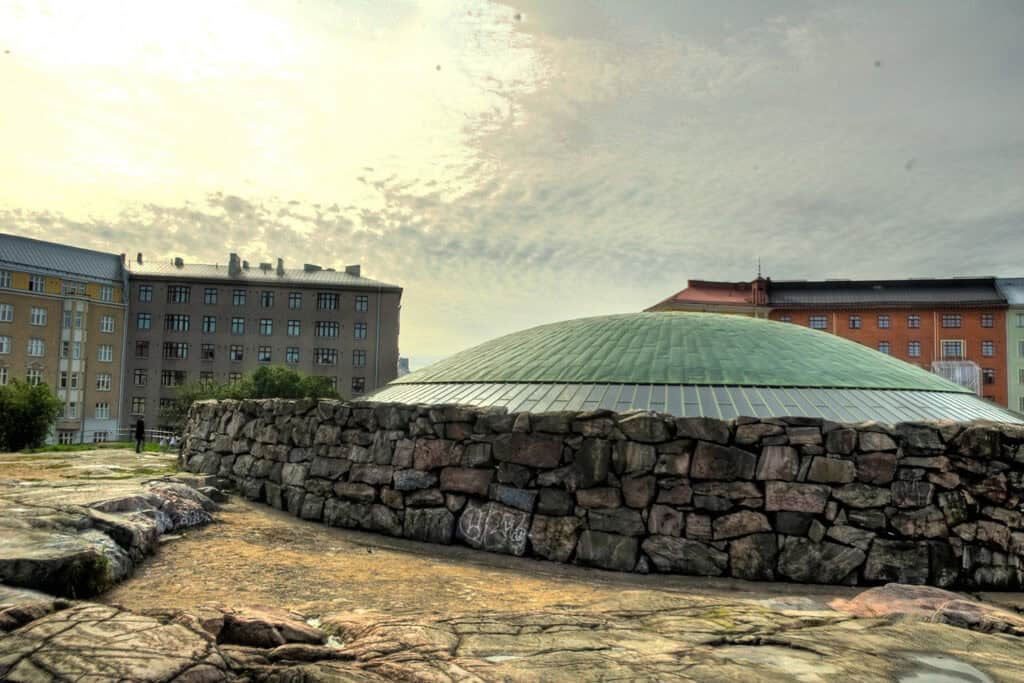
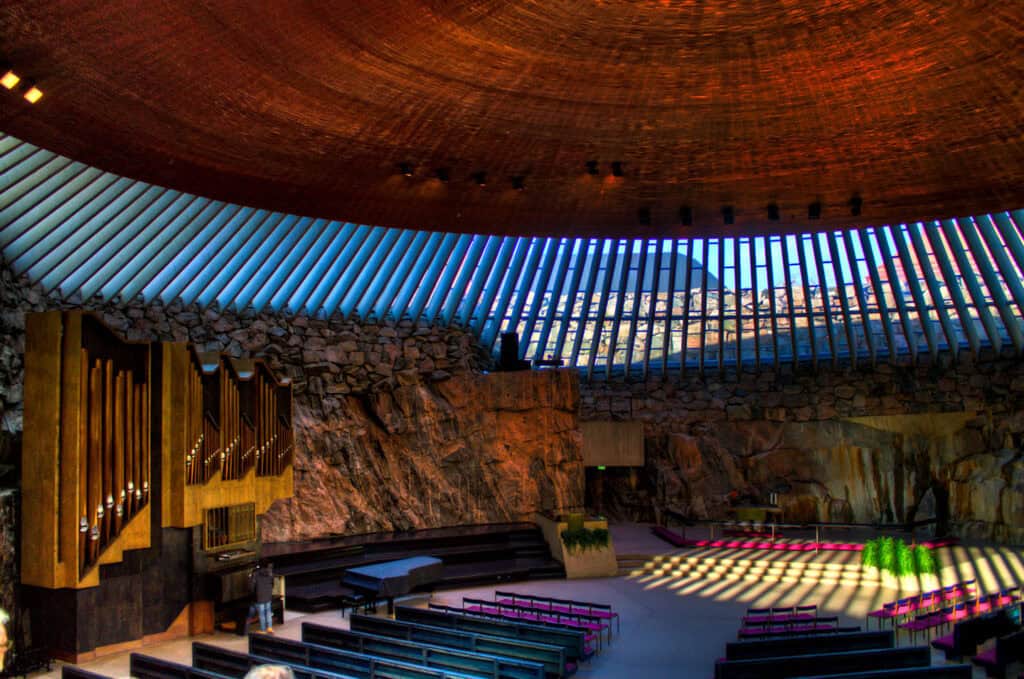
Temppeliaukio Church, often called the Rock Church, is a great example of modern architectural styles in Finland. It is located in Helsinki and was built directly into solid rock.
This design shows the harmony between nature and architecture. The church has a stunning copper dome that lets natural light shine in, creating a calm atmosphere.
The inside is simply designed, with smooth rock walls that improve its acoustics, making it a popular venue for concerts and events. Many tourists admire the church’s unique architectural style and peaceful ambiance.
See Also London Architectural Styles: Top 8 Eras That Shaped the City
10. Finlandia Hall
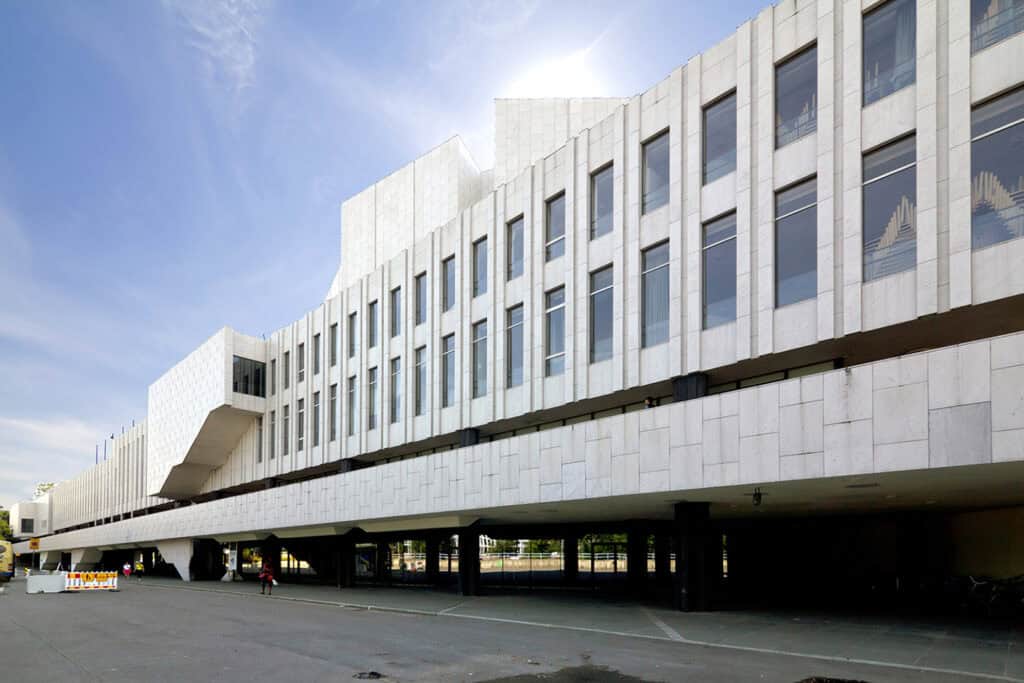
Finlandia Hall, designed by the famous architect Alvar Aalto, is a symbol of Finland’s cultural identity. Completed in 1971 and located in Helsinki, it serves as a venue for concerts, conferences, and exhibitions. The building’s design reflects a modern interpretation of Finnish architecture, featuring clean lines and functional spaces.
The hall is known for its excellent acoustics, making it a great place for music performances. Visitors often admire its elegant white exterior and unique shape. Finlandia Hall is not only a key cultural center but also a landmark where Finnish history and contemporary art meet, attracting many tourists every year.
Finland Landmarks: A Recap
From ancient castles and churches to bold modern architecture, Finland’s landmarks showcase the nation’s architectural journey. Each site highlights key moments in Finnish history. Explore Suomenlinna’s fortress, tour Turku Castle’s royal rooms, or admire Finlandia Hall’s unique design.
Stops like Helsinki’s Senate Square and the National Museum reveal the richness of Finnish culture. These landmarks are essential for anyone visiting Finland.



